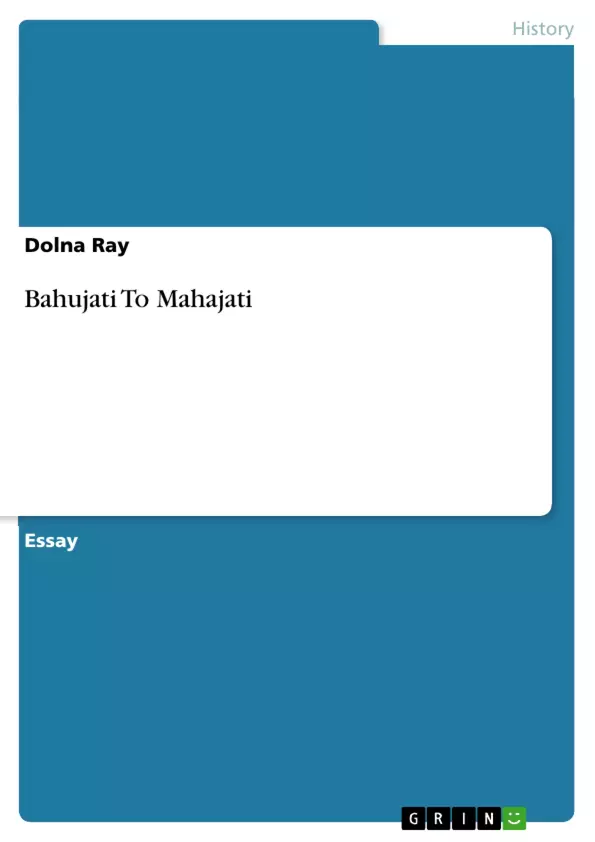This paper operates which attempts to explore the birth of Indian nationalism on a cultural paradigm on two levels. Firstly it traces the regeneration of national pride through the reconstruction of regional histories focusing on a particular province or even a locality, hagiological semi-fictional biographies of local heroes which tried to rekindle pride of a glorious bygone era. Secondly it concentrates on illustrating the genesis of nationalism through the twin cultural prisms of Samaj and Jati. The multidimensional concept of Jati had been often erroneously equated with the caste system and been regarded as a source of dissension. I endeavour to trace the evolution of the term from initial association with the heinous and fragmentary Caste/Varna system and later coming to signify Pan Indian nationalism cutting across several social segments.
Inhaltsverzeichnis (Table of Contents)
- Bahujati To Mahajati
- Writing jatiya history
- Bankim Chandra's Concept Of "Mahajati"
Zielsetzung und Themenschwerpunkte (Objectives and Key Themes)
This essay delves into the origins of Indian nationalism, exploring its roots in indigenous traditions and challenging Eurocentric interpretations. It seeks to demonstrate that Indian nationalism was not simply a derivative of Western influence, but rather a unique and multifaceted concept that emerged from pre-existing social and cultural structures.
- The role of indigenous concepts like samaj (social collectivity) and jati (a multifaceted concept encompassing race, caste, tribe, and nation) in shaping Indian nationalism.
- The interplay of Gemeinschaft (clan-based community) and Gesellschaft (formal associations) in the formation of national consciousness.
- The significance of historical narratives and the reconstruction of the past in constructing national identity.
- The evolution of the term "jaban" (foreigner) and its role in defining the "other" in relation to Indian nationalism.
- The influence of Western education and colonial rule on the development of Indian nationalism.
Zusammenfassung der Kapitel (Chapter Summaries)
- Bahujati To Mahajati: This chapter examines the historical debate surrounding the origins of Indian nationalism, contrasting perspectives that view it as a derivative of Western colonialism with those that argue for its indigenous roots. It introduces the concepts of samaj and jati as key elements in understanding Indian nationalism.
- Writing jatiya history: This chapter explores the emergence of "jatiya" history writing in colonial India, where intellectuals sought to reclaim and reconstruct a national narrative. It discusses the role of early historical accounts, including those written by missionaries and indigenous authors, in shaping the understanding of Indian history and national identity.
- Bankim Chandra's Concept Of "Mahajati": This chapter focuses on the contribution of Bankim Chandra Chattopadhyay to the development of Indian nationalism. It explores his concept of "mahajati" (a broader national identity encompassing diverse communities), his historical writings, and his critique of colonial narratives.
Schlüsselwörter (Keywords)
This essay focuses on the historical roots of Indian nationalism, exploring themes like indigenous traditions, the concept of jati, the role of historical narratives in constructing national identity, and the influence of Western education and colonial rule. It also examines the evolution of the term "jaban" (foreigner) and its significance in defining the "other" in relation to Indian nationalism.
- Arbeit zitieren
- Dolna Ray (Autor:in), 2012, Bahujati To Mahajati, München, GRIN Verlag, https://www.hausarbeiten.de/document/295870


